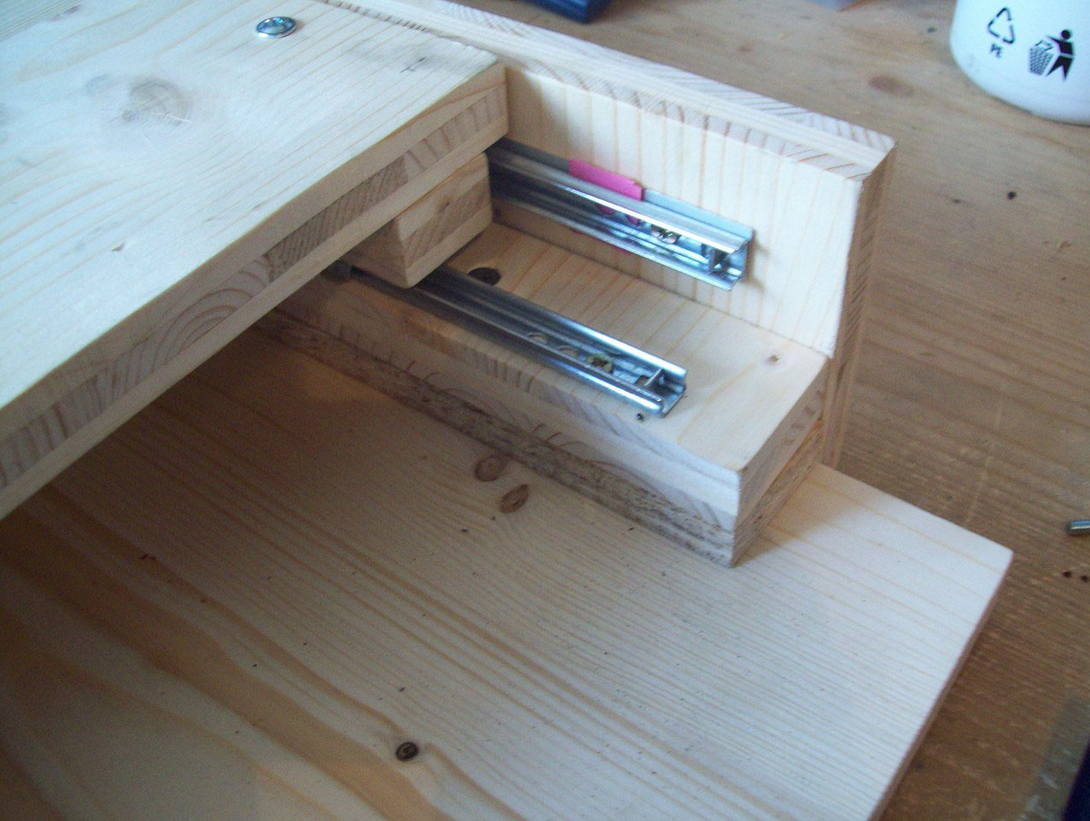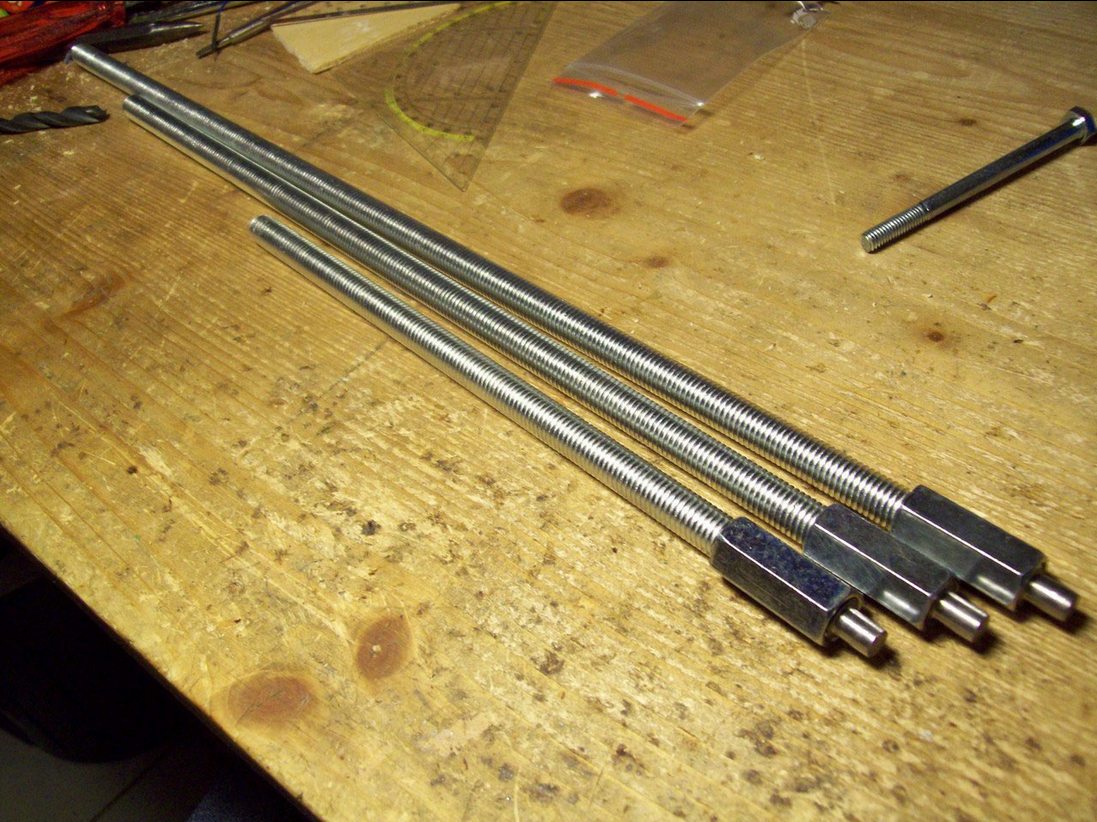First CNC machine
CNC, Projects ·Introduction
Good friends of mine needed some plexiglass signs with numbers written on them for a little project. I fabricated those by printing them on paper, sticking it on plexiglass blanks and grinding the contours through by hand with a dremel. This procedure was very labor-intensive, it took me a whole afternoon to manufacture the numbers 1 to 15. There must be better ways to achieve this, I thought, so the idea to build my first CNC router was born.

Construction and components
Inspired by other blogs on the internet, I started constructing my own machine in Google SketchUp.

I used drawer slides as linear guides. By putting two slides at an angle of 90°, the flex and play is “reduced”. Of course, drawer slides are still terrible for this application, but they are easy to get hold of and in those days, budgets for projects were also smaller than they are today.

To drive the axis around, regular M10 rods are used. Standard M10 nuts have quite some play on the shaft, but when nut and axis are not perfectly aligned, most of this axial play is quickly gone. In this machine, the backlash of the nut on the M10 screw was actually the smallest of all problems.

Some rather doubtful techniques were used to couple the M10 rods to the stepper motors.

The control electronics for this machine were designed, etched and assembled at home. They are based on the popular but rather stone-aged L297/L298 combination, and driven with MACH3. Despite being not quite up to date, the control system worked very reliable, much more reliable than the machine in fact. That’s why I re-used in on the engraver project later.

Result
From a mechanical point of view, the machine can obviously not even be called a CNC-router, maybe a CNC-contraption. There were so many issues, from a general lack of stiffness over slow speeds due to low-pitch screws to slipping couplings and motors loosing steps, as one can probably tell by the look already. However, it was a great pleasure seeing the router carve letters in plexiglass as of by magic, so to say. And it also was a big learning experience to see how things behave and what can be done to improve matters. It took about 7 years until the perfect occasion came to build a much improved successor of this early project.

As mentioned, carving words in plexiglass was more or less the only use for this machine, but it did quite ok at this task.

A more comprehensive description of this project is presented here, although in german language.